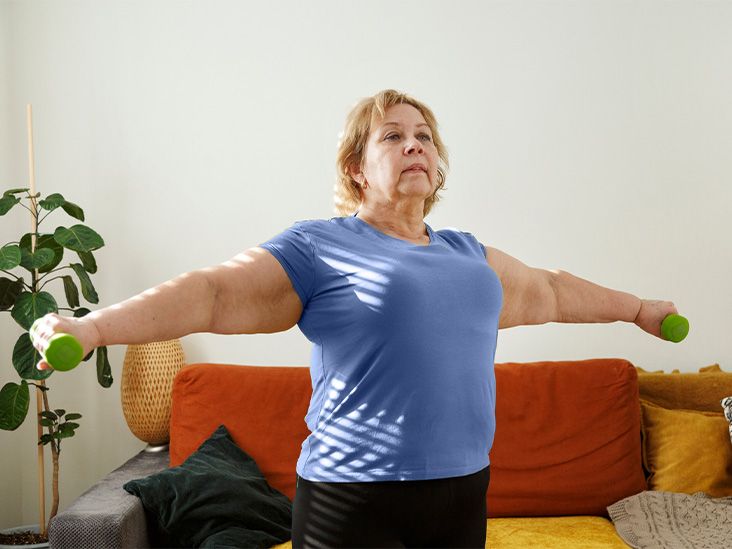Finger clubbing refers to enlargement of the fingertips and a downward sloping of the nails. Clubbing can be a sign of some lung diseases, such as lung cancer. However, it is not typically a sign of COPD.
Finger, or digital clubbing involves a change in shape of the nails. The nail bed might swell, nails can turn downward, and fingertips may appear like tiny balloons. Clubbing may affect the toes and fingers equally on both sides. Certain lung diseases may lead to clubbing.
Chronic obstructive pulmonary disease (COPD) is a long-term lung condition caused by damage to the tiny air sacs in the lungs, known as alveoli. This damage makes it difficult to breathe. COPD may also impact other areas of the body, such as the fingernails.

Finger clubbing rarely occurs
Clubbing may develop gradually and with or without other symptoms of lung disease. These can include coughing, chest tightness, and shortness of breath.
Although COPD does not typically cause clubbing, it may affect the nail beds in other ways. People with COPD may develop low oxygen levels in the body, known as hypoxia. This may cause the nails, skin, and lips to become blue due to decreased oxygen levels. Doctors refer to this bluish color as cyanosis.
Blue nails may come and go as oxygen levels increase and decrease in people with COPD.
While clubbing is not usually a symptom of COPD, there are several other signs.
COPD symptoms may start slowly and increase over time. Symptoms may also increase during times of a flareup of after exposure to a trigger. COPD triggers can include a respiratory infection, weather conditions, and pollution.
Possible symptoms of COPD include:
- wheezing
- shortness of breath
- chest tightness
- increased mucus production
- coughing
- fatigue
Read on to learn more about some physical signs of COPD.
Finger clubbing is sometimes
Possible causes of clubbing include:
Lung cancer
Lung cancer is the most common pulmonary cause of finger clubbing, accounting for about 80% of clubbing cases. A 2021 case report found that 5–15% of people with lung cancer had finger clubbing.
Additional
- a cough that does not go away
- coughing up blood
- unexplained weight loss
- shortness of breath
- chest pain
Interstitial lung disease (IDL)
IDL is a group of diseases that causes scarring on the lungs. A 2017 cohort study found that clubbing occurred in 7–42% of people with IDL. Although clubbing was associated with a poor outlook, it was not linked to condition severity.
Symptoms of IDL may include:
- shortness of breath
- fatigue
- dry cough
Liver disease
Liver diseases can cause nail problems, such as clubbing. There are several forms of liver disease, including hepatitis A, B, and C, and cirrhosis. Liver disease symptoms may include:
- yellow skin
- fatigue
- loss of appetite
Cardiovascular diseases (CVD)
Various types of CVD may also cause clubbing. For example, clubbing can occur with infective endocarditis, congenital heart disease, and hemiplegic stroke.
Symptoms of CVD can vary but may include:
- chest pain
- low energy
- decreased exercise tolerance
- trouble breathing
Inflammatory bowel disease (IBD)
IBD involves digestive tract inflammation and includes conditions such as ulcerative colitis and Crohn’s disease. Finger clubbing can occur with either type of bowel disease. However, it occurs more frequently in people with Crohn’s disease than in people with ulcerative colitis.
Symptoms of IBD may include:
- abdominal pain
- diarrhea
- nausea
- weight loss
Finger clubbing is not harmful in itself. Treatment typically
Treatments can vary depending on the cause. Specific treatment for conditions such as lung cancer, cardiac conditions, and inflammatory bowel disease may include:
- chemotherapy
- surgery
- medications
While treating the underlying cause may help improve clubbing, research is limited. In some cases, nails may improve after treatment, while in others, clubbing may not be reversible.
There are no known ways to prevent finger clubbing. However, there are steps a person can take to reduce their risk of chronic diseases that may lead to clubbing. These
- avoiding smoking, which can increase the risk of lung cancer and cardiac problems
- getting regular exercise to promote heart health
- limiting alcohol to reduce the risk of liver disease
- getting regular health checkups and screenings to diagnose and treat diseases early
- eating a healthy diet including vegetables, fruits, lean protein, and whole grains
Finger clubbing refers to a distortion of the nails, which can create a downward turn and balloon-like appearance.
COPD usually does not cause clubbing. However, other types of lung diseases may lead to digital clubbing, such as lung cancer. Other conditions can also cause finger clubbing. These include inflammatory bowel disease, liver disease, and cardiovascular conditions.
Treatment for clubbing typically involves addressing the underlying health condition.


